-- Page 1--
Spanish symbols have intrigued me for many years but not as much as they
have the past several months.
When my sister and brother-in-law returned from Florida this fall and showed
me a picture they had taken it
started a chain of events which opened many doors of learning to me. I would
like to share with you what I've discovered.
Jerry Ann and Ken visited the Mel Fisher Maritime Heritage Museum in Key
West in September 2010 and were very
excited to show me pictures and treasures from their trip. Below is the picture
which made the biggest impact on me. Notice
number 9 on the silver bar explanation key. It describes an obliterated symbol
on one of the silver bars found at the Atocha site.
It's a capital E with a diamond above it. Somewhere I had seen this symbol
before. I looked at the symbols on the silver bar
from Hoyt Peak and found a nearly identical symbol. (See second image) The
resemblance was unmistakable and piqued my interest.
I had to find out more and this appeared to be the opportunity I had been
looking for. Mel Fisher's group has backing and resources
I don't. I needed to contact the museum and learn more. After making several
calls I finally hooked up with one of the archeologists
named Corey Malcom. He was very helpful and I asked him if he had more information
above the symbol in question. He referred to his
documentation and called me back a few minutes later. The silvermaster who
was in charge of recording the treasure boarding the Atocha
hadn't explained the symbol except as it is stated here. Corey and I emailed
and talked on the phone several times over the next few days.
He explained that the bar symbols, like the E, referred to families who owned
and shipped the bars. Corey referred to these symbols
as "siglas". So what is a sigla? He told me about several books
which could help shed light on the topic. You know me.
I couldn't let it rest. I had to know more. Over the next few weeks I purchased
several books, videos, and
consulted the Internet extensively. (See page 2 for more of what I discovered
about siglas).
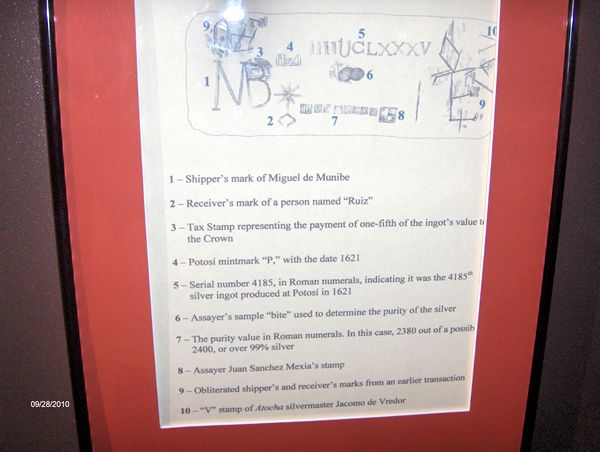 |
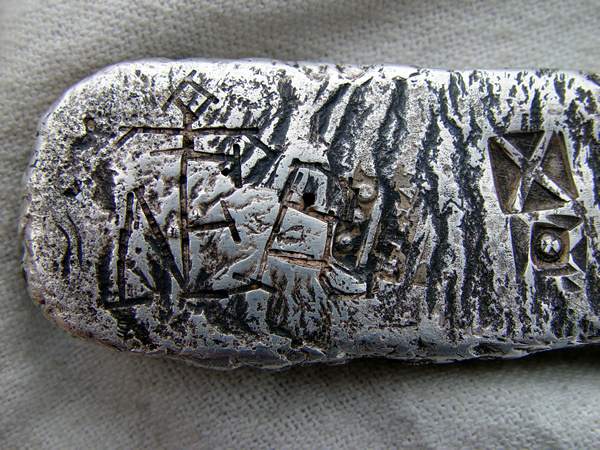 |
The resemblance is undeniable although not exact.
As I learned more about siglas I believe I learned a possible explanation
of why.
(The explanation will be on page 2).
Another concept which can be extrapolated from my research is that the
Hoyt Peak bar is from the approximate same era as the 1621 Atocha bar. Cool!
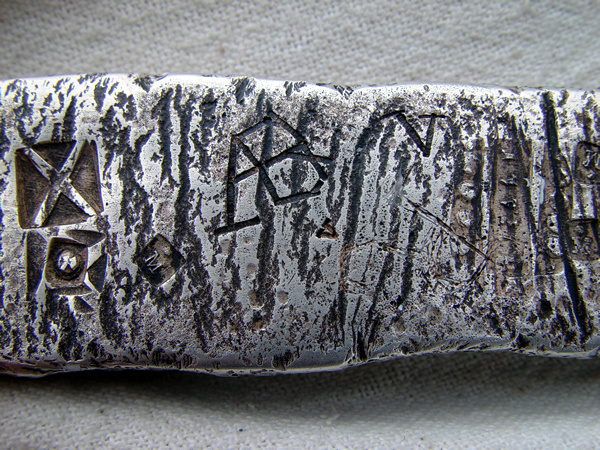 |
Here are other symbols, siglas, etc. on the silver bar from Hoyt Peak, Utah.
My research tells me that the V means this bar had actually been inventoried
by the Silvermaster in preparation for travel and shipment to Spain. 7.
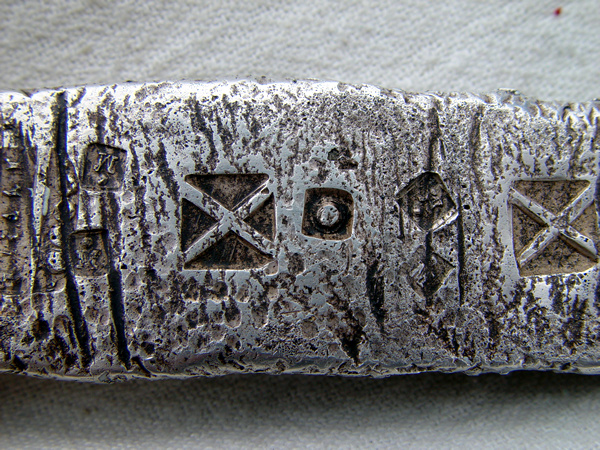 |
Among them are M's, V's, Hispan several times, X's, dots, and more.
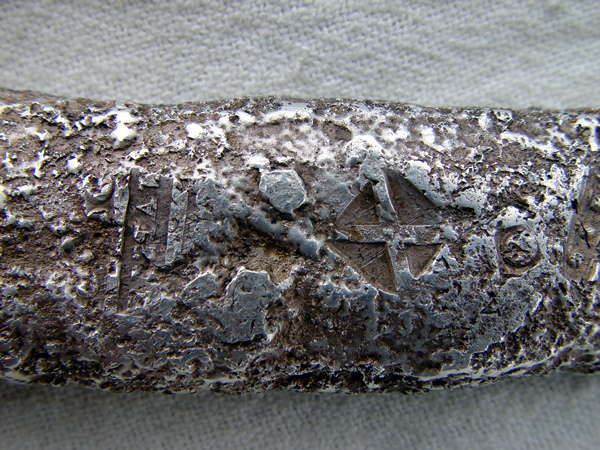 |
As seen here the word Hispan (Latin for Spain) has reversed lettering.
It appears that either the die maker didn't contemplate the process completely,
or he was dyslexic;
which makes one consider the possibility that Tapia worked the mines both
in South America and in Utah.
(Juand Ximenez de Tapia is the one credited for the reversed lettering on
some coins found at the site of the
sunken Spanish Galleon Nuestra Senora de Atocha. His assayer's mark was a
T).
Page created 12/14/10.